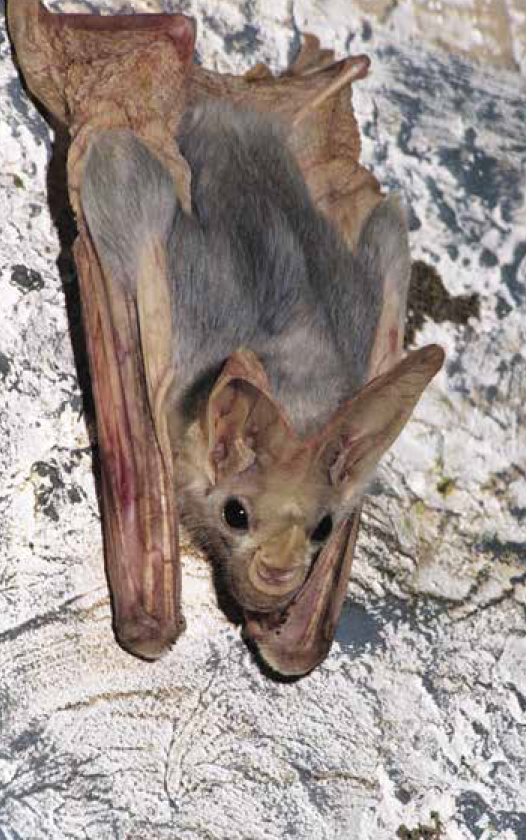A quarter to a third of all ghost bats probably live in the Pilbara – an estimated 1,500 in the Chichester subregion and 350 in the Hamersley subregion (in 2015). They are isolated and genetically distinct from other ghost bat populations. And only in the Pilbara are ghost bats not yet subject to threats from cane toads.
With a wingspan of 60 cm, the ghost bat is the second-largest echolocating species of bat (microchiropterans) in the world, and the largest in Australia. It is a top-order predator in the Pilbara, with a broad diet of large insects, locusts, small mammals, birds, reptiles and frogs.
The species once occupied most of Australia but contracted northwards with increasing aridity in recent glacial periods. Since European colonisation, ghost bats have contracted further northwards, with much of their arid zone distribution lost in recent decades.
The ability of ghost bats to persist in the Pilbara depends on the availability of deep underground roosts in humid, temperature-stable caves or disused mines. Females display a high degree of philopatry (remaining in or returning to their birthplace to give birth). Most known roost sites in the Pilbara are abandoned mine adits (horizontal tunnels).
The Pilbara population of ghost bats is thought to have declined by more than 30% since the early 1990s. The main threat is the loss and degradation of roost sites, particularly maternity roosts. Much of the Pilbara population was known from 6 abandoned mining tunnels, but 2 have disappeared and the others show signs of collapse, flooding and human intrusion, and are part of mining exploration leases.
Poisoning by cane toads has emerged as a recent major threat. Ghost bats in Kakadu National Park are thought to have declined by more than 90% due to their consumption of toads, and there have also been substantial declines in western Queensland. Only in the Kimberley have ghost bat populations probably been stable, but this may change as cane toads spread.
Ghost bats are also threatened by barbed wire fences. As seen in the Pilbara, a single fence near a colony can eventually entangle all individuals.
